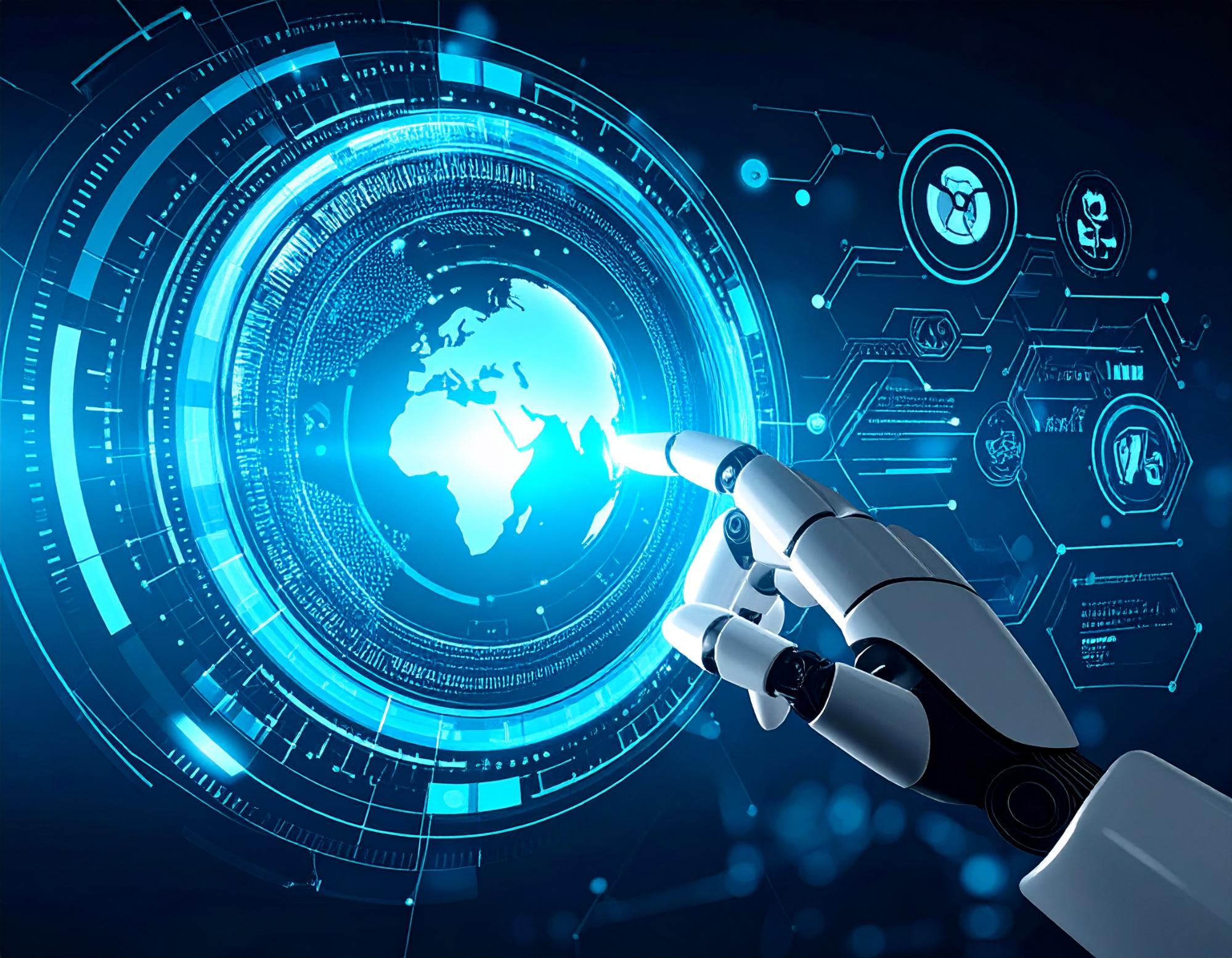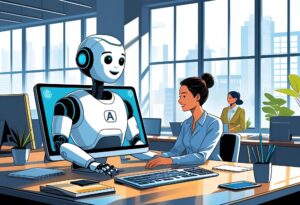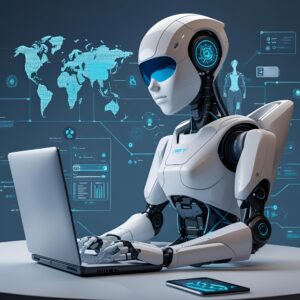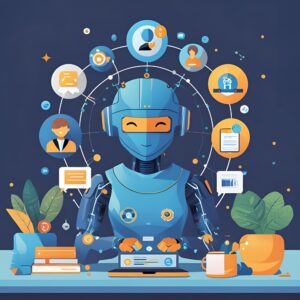
“Agentic AI: Where marketing thinks, learns, and leads itself.”
Marketing in 2025 is being reshaped by powerful, self-reliant AI systems. Leading the way is autonomous advertising, campaigns that run and optimize without human input.
At the core is Agentic AI, a system that studies data, sets goals, makes decisions, and adapts to trends, far beyond rule-based automation.

Image credit- AI generated by Karishma Singh
Agentic AI is a new generation of artificial intelligence designed to operate on its own intellect. It can make decisions, take on tasks, execute plans, and set goals, without human interference. Think of it as your helper or agent, not just a tool. It’s called “agentic” because it acts with purpose, like an agent.

Image credit- AI generated by Karishma Singh
Once given a clear goal, Agentic AI works autonomously, no constant input needed, as if it has its own mind: strategizing, deciding, acting, and managing tasks.
Example:
Think of Agentic AI as your personal project manager, you say, “Launch a marketing campaign,” and it handles everything from research to execution, all on its own.
Another key factor is adaptability. Agentic AI can assess performance and adjust strategies based on interactions and outcomes, even when results are uncertain.
Example:
Imagine you’re running an e-commerce store. Agentic AI notices a drop in sales, analyzes user behavior, updates product recommendations, adjusts pricing, and shifts ad targeting, all without needing instructions.
Agentic AI is goal-driven. It doesn’t just follow commands, it prioritizes and completes tasks needed to achieve the assigned objective.
Example:
If you task it with “boost website traffic,” it won’t wait for each instruction. It’ll research keywords, optimize SEO, create content, and monitor analytics, automatically working toward the end goal.
Like us, Agentic AI handles tough tasks by breaking them into smaller steps, making decisions at each stage, and adjusting its strategy as needed.
Example:
Command it to “launch a new product.” It’ll break it down, conduct market research, design campaigns, set timelines, and adapt based on feedback, step by step, just like a human planner.
Agentic AI collaborates smoothly with humans and other AI agents, sharing data, coordinating tasks, and contributing to keep progress on track.
Example:
In a product launch team, Agentic AI handles market analysis while another AI manages design. It shares insights with both the human team and AI partners, ensuring everyone stays aligned and the project moves forward efficiently.

Image credit- AI generated by Karishma Singh
| Aspect | Traditional AI | Agentic AI |
| Functionality | Follows commands like an assistant | Works as a partner, asking smart questions |
| Task Handling | Completes tasks only after instructions | Figures out the best path to reach your goal |
| Interaction Style | Needs constant input | Learns from interactions and takes independent action |
| Example Analogy | Like a GPS that shows the route after entering the destination | Like a smart driver who knows your routine, handles traffic, takes detours, and informs others if you’re late |
| Decision-Making | Follows rigid rules | Uses its own intelligence to make context-based decisions |
| Real-Life Use Cases | Limited to instruction-based tasks like writing or calculating | Can initiate loan requests, update accounts, check credit scores, handle claims in banking and insurance. |

Image credit- AI generated by Karishma Singh

Image credit- AI generated by Karishma Singh
First things first, Agentic AI can automate your daily marketing tasks, like ad scheduling, A/B testing, and budget allocation, without needing your input every time.
Example:
Instead of manually setting ad times or testing creatives, Agentic AI handles it all. It experiments, learns what works, and delivers the best version, no extra effort needed.
After running ads and automating tasks, Agentic AI continuously monitors performance in real time and adjusts based on customer interactions.
Example:
If a keyword in your Google Ads underperforms, Agentic AI instantly lowers the bid or pauses it, no need to check reports or give instructions.
It can manage multiple campaigns across various channels simultaneously without burnout.
Example:
Whether it’s YouTube, Instagram, or TikTok, Agentic AI tailors content in real time for each platform and audience, no extra manpower needed.
Image Credit– Tempus Labs
![]()
Agent Hospital (Tsinghua University)
China has recently launched the world’s first fully AI‑powered virtual hospital, Agent Hospital developed by Tsinghua University.
It works with 14 AI doctors and 4 nursing agents (now scaling to 42), capable of handling up to 10,000 patient cases in just a few days, equivalent to two human doctors working for two years.
These agents scored 93.06% accuracy on a medical licensure exam (MedQA), covering diagnostics, treatment plans, and follow-up care, all being autonomously.

Image Credit- Paypal
(Smart or Precision Farming):
Uses AI in its self-operating tractors and See & Spray technology to identify and target weeds with perfection.
Supports agricultural startups with AI grants and tools for perfect farming and sustainable practices.
Specializes in AI and computer vision to improve crop spraying accuracy and reduce chemical use.
Source:
https://insights.daffodilsw.com/blog/top-20-agentic-ai-use-cases-in-the-real-world
In 2025, marketing isn’t just evolving, it’s being transformed, with AI agents leading the charge. These smart, self-reliant tools are now a reality, reshaping how brands connect, campaign, and grow profits.
A recent report by Salesforce in 2024 showcased that 83% of marketing teams will be using AI to grow their overall revenue.
On the other hand, marketers who stick to their skills without using the tool will only get 66% of the same results, which portrays that leveraging AI can be a game-changer for marketers.
As Agentic AI takes over the landscape, it’s not here to replace us but to lighten our load. By staying updated, understanding its workings, and focusing on strategy, we can stay ahead of 90% of the crowd
– By Karishma Singh